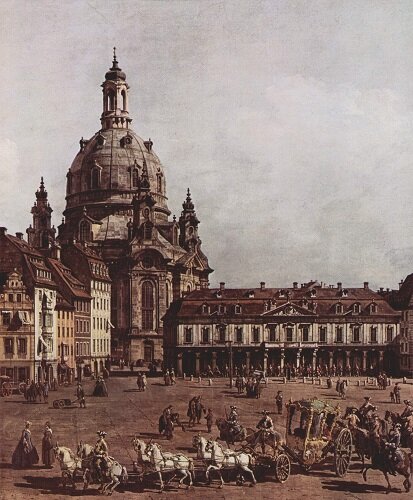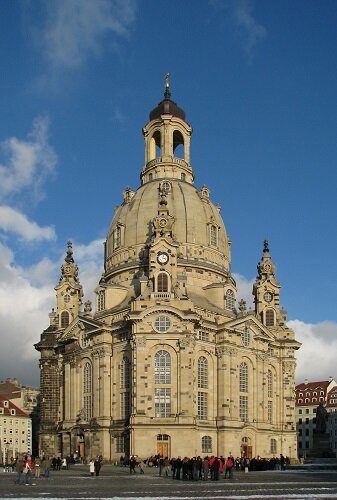The Bombing of Coventry November 1940
Bomb damage in the centre of Coventry - Lt. Taylor (War Office official photographer) Imperial War Museum © IWM H 5600
This post should have been for last week, but I opted to post about Diwali instead.
Last Saturday, 14 November, was the 80th anniversary of the bombing of Coventry.
Coventry, in Warwickshire, in the West Midlands region, has a long history.
It shares a common border with the village of Baginton, where the Romans had founded a settlement.
It had its own castle, Coventry Castle, built in the early 12th century but demolished later that same century.
By the 14th century, Coventry was an already established centre of the cloth trade and was one of the largest cities in England in the Middle Ages.
With the advent of the Industrial Revolution, during the 18th and 19th centuries, Coventry turned its talent to watch and clock manufacture. When that industry declined, its pool of skilled workers was instrumental in setting up the manufacture of bicycles.
It was the invention of the Rover safety bicycle by James Starley and his nephew, John Kemp Starley, that really put Coventry on the bicycle-manufacturing map. That company eventually became Rover.
Rover safety bicycle - Jonathan Cardy (Wikipedia)
Rover badge - 'DeFacto' (Wikipedia)
By the early 20th century, bicycle manufacture developed into motorbike and car manufacture, and this eventually led to the aircraft industry and munitions prior to the First World War.
Although small and medium-sized factories had been built in the same streets as the houses and shops of the city centre, the interwar years saw the development of large suburbs built away from industrial buildings.
In the lead-up to the Second World War, Coventry established itself as one of Britain’s largest manufacturing and engineering cities, prized for its military-industrial output.
In early September 1940, a year after the start of the Second World War, in an effort to force Britain to make peace, Hitler began nightly attacks on London. Despite the relentless attacks, Britain’s morale remained strong.
By November, Hitler decided to target Britain’s industrial towns, especially those involved in aircraft production. Coventry was a prime target.
German intelligence had done its job well, having pinpointed key locations in the city, including navigation aids and military vehicles.
Another reason for choosing Coventry was the hope that a successful attack on the ‘Heart of England’ would finally break the country’s morale and surrender would surely follow.
During the Battle of Britain between August and October 1940, Coventry had already suffered up to 17 small raids by the Luftwaffe, resulting in the deaths of 176 people, with a further 680 injured.
Worse was to come.
The evening of 14th November was cold; unfortunately, it was also clear, making it perfect for an air raid.
Involving 515 German bombers, the attack, code-named Operation Mondscheinsonate – Operation Moonlight Sonata – had been methodically planned to not only destroy factories, but monuments and residential areas and to break the public’s morale.
The first air raid sirens sounded at 19:10 with the first wave of aircraft dropping marker flares at 19:20.
Bombers then dropped high explosive bombs, knocking out the water supply, electricity and gas mains, and destroying the roads. Telephone lines were damaged, cutting the city off.
The next wave of bombers dropped a combination of high explosive and incendiary bombs. The high explosive bombs damaged roofs, creating entry points for the incendiary bombs to fall into buildings and ignite.
Damaged water mains and cratered roads hindered firefighters battling to put out the raging fires.
Coventry’s anti-aircraft guns fired throughout the attack but only managed to shoot down one German bomber.
Around 20:00, incendiaries hit Coventry Cathedral, dedicated to St Michael, setting it alight. Volunteer firefighters managed to put it out. But as more direct hits followed, all they could do was watch as new fires broke out, quickly spreading out of control.
The ruined nave and chancel of Coventry Cathedral seen from the west tower - 'GoShow' (Wikipedia)
By now, the city centre was ablaze with more than 200 fires. Firefighters didn’t have enough water to fight the blazes due to the damaged water mains.
The flames, visible from almost 100 miles away, lit up the city for an additional wave of bombers.
The raid intensified around midnight.
It wasn’t until 06:15 before the all-clear was sounded.
In total, 30,000 incendiaries and 500 tons of high explosive bombs had been dropped on Coventry.
In that one night, more than 4,300 homes were destroyed or damaged as were about two-thirds of the city’s buildings. Most of the city centre was destroyed.
The damaged buildings included 2 hospitals, 2 churches and a police station.
9 police constables had died.
About one-third of the factories were either completely destroyed or severely damaged, with another third badly damaged with the rest slightly damaged.
The destroyed factories included the main Daimler factory and the Humber Hillman factory, the Alfred Herbert machine tool works, which was one of the largest machine tool works in the world, 9 aircraft factories, and 2 naval ordnance stores.
Churchill inspecting the ruins of Coventry Cathedral - Major WG Horton (War Office official photographer) Imperial War Museum © IWM H 14250
Despite the destruction of these factories, war production wasn’t badly affected as much of the essential production had already been moved to the city’s outskirts, to shadow factories.
These shadow factories were nothing to do with secrecy. Instead, they were the outcome of the Shadow Scheme, a plan developed by the government in the mid-1930s to meet the urgent need for more aircraft. The term ‘shadow’ referred to the skills transfer with already skilled motor industry employees working in the shadow of their own similar motor industry operations.
It is estimated that 568 people were killed in the raid, but the real number will never be known. Many bodies were either not recovered or were unrecognisable. A further 863 were badly injured with 393 suffering lesser injuries.
The comparatively small number of casualties were thanks to the earlier air raids. Many of the city’s inhabitants had taken to leaving the city at night to sleep in nearby towns and villages.
Those who sought refuge in the air raid shelters suffered little death and injury as most of the 79 public air raid shelters hadn’t been destroyed.
On 20 November, the first of 2 mass burials took place.
Although the raid must have seriously impacted the city’s morale, how badly had it been damaged?
Within 2 weeks of the bombing, some factories had been sufficiently repaired to reopen.
While the city’s infrastructure remained severely damaged, food kitchens appeared.
When the people of the city were offered evacuation, only 300 accepted.
So, although morale in the city and throughout Britain wavered, the people remained strong.
While the Luftwaffe, no doubt, celebrated their astounding victory, elsewhere in the world the raid served to illustrate Nazi cruelty.
Reports included pictures of the shattered cathedral and the mass burials. In America, which still maintained its neutral position, the raid on Coventry may have played a part in shifting public opinion. By the end of 1940, President Roosevelt was able to gain congressional support to supply aircraft and ships to Britain.
Although, operationally, a success for Germany, the raid fuelled the propaganda battle in Britain’s favour, a victory for Churchill and his government.
Unfortunately for Hitler, his decision to bomb targets that included civilians paved the way for similar strikes against German cities.
Senior figures in the British Air Ministry, notably Air Vice-Marshal Arthur Harris, argued that the raid on Coventry freed Britain to launch similar attacks. Up until the fateful raid, the RAF had been prohibited from bombing civilian targets.
In February 1942, when Harris took charge of RAF Bomber Command, this heralded the systematic bombing of German cities. The attacks followed a similar pattern to the Luftwaffe’s attack on Coventry, eventually made even more efficient with improved navigation and bomb-aiming technology.
Air Chief Marshal Sir Arthur Harris - Flying Officer Stannus (Royal Air Force official photographer) Imperial War Museum © IWM CH 13020
During the 3-year campaign, cities including Hamburg, Kessel and Berlin were nearly wiped out. The most notorious target was the historic city of Dresden, bombed between the 13th and 15th February 1945 in a joint British-American attack.
In the rebuilding of the city of Coventry, it was decided to leave the cathedral in ruins as a reminder of the bombing.
Originally called St Michael’s Church, it had been constructed between the late 14th and early 15th centuries. In 1918, it had been elevated to cathedral status.
In the 1950s, a new cathedral was constructed alongside the ruin. It was the architect, Basil Spence, who had insisted that, instead of rebuilding the ruined cathedral, the new cathedral be built alongside the ruins with the two buildings basically forming one church.
On 23 March 1956, the Queen laid the foundation stone of the new cathedral.
The building was consecrated on 25 May 1962.
When I visited Coventry in 2015, I am ashamed to admit I hadn’t been aware of what the city had gone through. I’d mistakenly believed the Blitz had only affected London.
As I took these pictures, I realised there was a lot I had to learn.
St Michael by the entrance of the rebuilt Coventry Cathedral
View of the west tower of the old cathedral from the rebuilt one
Interior of the ruined cathedral
After the bombing, Provost Richard Howard (seen on the left of Churchill in the IWM photo above) had the words ‘Father Forgive’ inscribed on this wall behind the altar of the ruined building. The cross is made out of 2 pieces of charred medieval roof timbers which had fallen in the shape of a cross.
The interior facing away from the altar
Part of the wall with the west tower in the background
The west tower and spire
Coventry Cathedral would eventually form links with another church – Frauenkirche, Church of Our Lady, in Dresden.
Dresden Market with the Frauenkirche ~ Bernardo Belloto 1749-1751 (Wikipedia)
Built between 1726 and 1743, this beautiful church withstood two days and nights of attacks during the air raids in February 1945.
The 8 interior pillars supporting the large dome held up long enough for the 300 people who had sought shelter in the crypt to be evacuated. Eventually, the pillars gave way in the heat generated by over 600,000 incendiary bombs that were dropped on the city.
The dome collapsed at 10:00 on 15 February.
The pillars, glowing bright red, exploded.
The outer walls shattered and nearly 6,000 tons of stone plummeted down to crash through the massive floor.
Over 20,000 people perished in Dresden. The casualties were not only the people of the city, but included refugees who’d fled westwards, away from advancing Soviet troops.
Following the reunification of Germany in 1990, The Society to Promote the Reconstruction of the Church of Our Lady began efforts to raise funds to rebuild the church.
In 1993, the Dresden Trust was founded in Britain. This organisation is dedicated to healing the wounds of war and furthering harmonious relations between the people of Britain and Dresden.
With the help and support of other organisations, the church was rebuilt and completed in 2005, one year earlier than planned.
Rebuilt Frauenkirche - 'Netopyr' (Wikipedia)
In 2012, a sculpture – ‘Choir of Survivors’ – was unveiled in the ruins of the old cathedral in Coventry.
(own image)
The work of German artist, Helmut Heinze, the sculpture is a gift from the Frauenkirche to the people of Coventry in memory of civilians killed in the Second World War.
A poignant symbol of reconciliation and hope arising from so much death and destruction.
(own image)

















